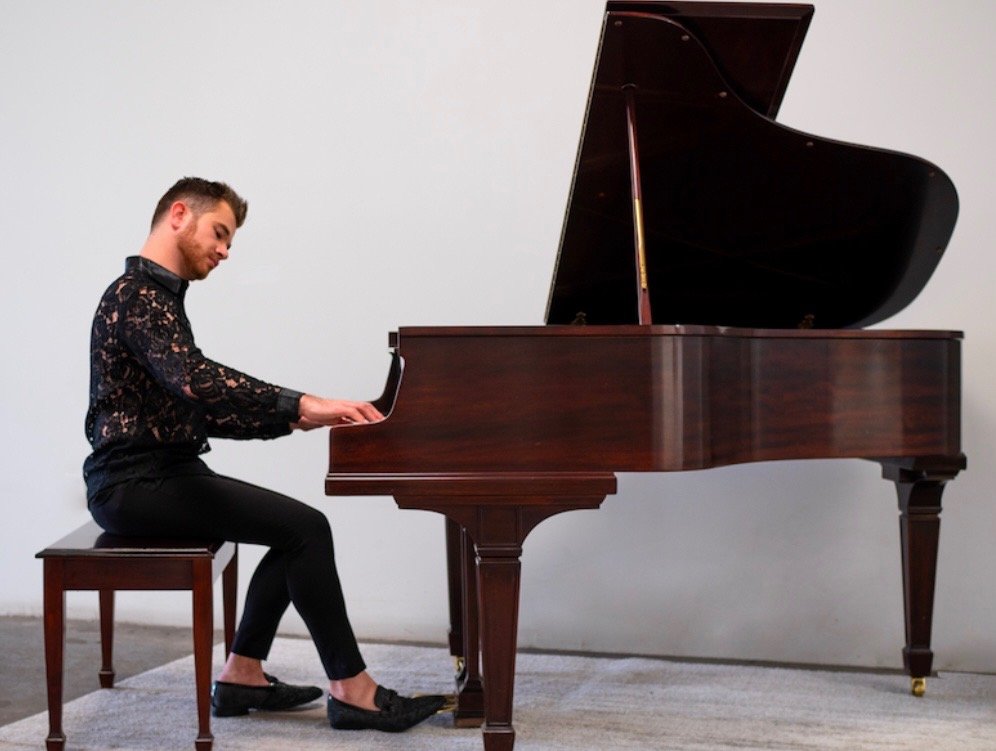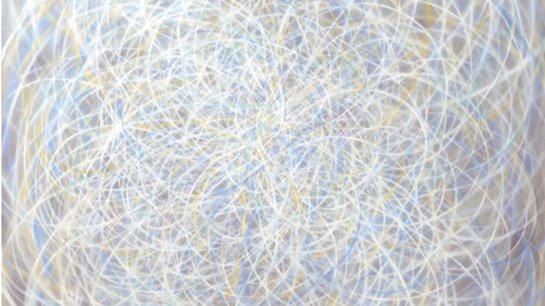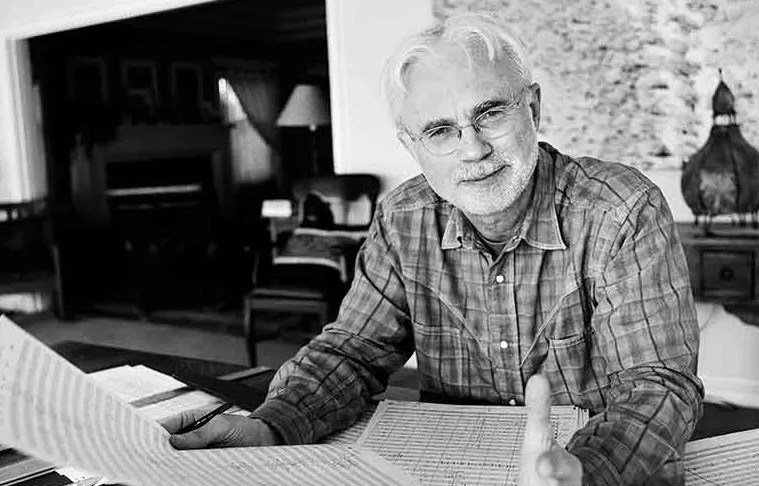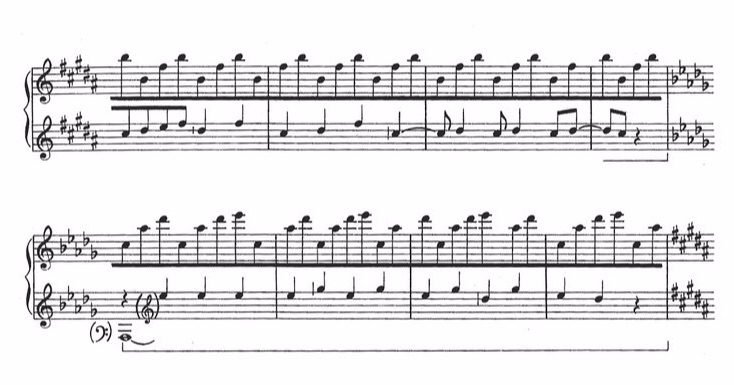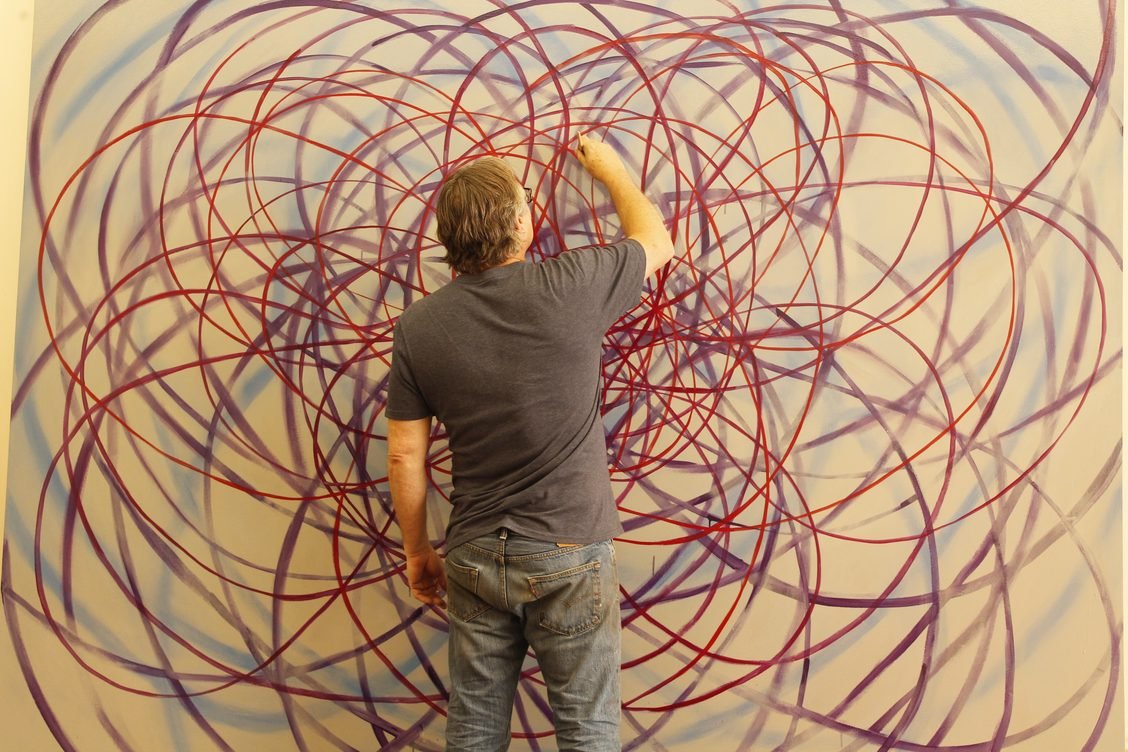The Music Within the Patterns
On Saturday, June 17th, at 2 pm Anthony Cardella will be giving a lecture and performance on Minimalism.
On display for visual reverie will be one post-post-modernist work by International artist Shane Guffogg inspired by T.S. Eliot’s four-part meditation: Four Quartets. Guffogg to talk about his painting series.
Shane Guffogg, At the Still Point of the Turning World - By A Grace of Sense, A White Light, Still and Moving, oil on canvas, 60 x 60 inches, 2018
MUSIC PROGRAM
Anthony Cardella, piano
China Gates - John Adams
Evening Song - Philip Glass (from the opera: Satyagraha, the conclusion to Act 3)
Limited to 20 SEAT capacity | Must have a ticket for entry | One-day event
ADDRESS
El NIDO by VC Projects, 1028 N. Western Avenue, Los Angeles 90029 | Email: Victoria@vcprojects.art | Cell: 949.291.9499
PARKING:
Hourly metered parking is available on Western Avenue ($1 per hour)
The inside scoop, from the curator’s desk
MORE THAN MUSIC …
What is the incentive of the lecture, and what can we expect from Tony?
“The lecture is inspired by Shane from our talk at Rita House when he stopped me and said, “Wait, how is that minimalism? You played a lot of stuff in that piece that was not minimal,” referencing The Bright Motion. So I was inspired to talk about “what is minimalism in music?” I’m giving the historical background of minimalism, its influences, and origins, the pinnacle composers as well as examples of their writing styles, and quite a few stories about them, and then I will use the two pieces I chose to synthesize all of these and demonstrate different types of minimalism as well as how to hear and interpret these pieces, unlocking the patterns. There will be a visual guide shown while I perform so that the audience can see the patterns and the relationships between them.” Anthony Cardella
Along with a guided talk, Tony will be performing
China Gates - John Adams
Evening Song - Philip Glass (from the opera: Satyagraha, the conclusion to Act 3)
On display is one large painting by Shane Guffogg
At the Still Point of the Turning World – By a Grace of Sense, a White Light, Still, and Moving, oil on canvas, 60 x 60 inches, 2018
Knowledge is power, I read that a long time ago and believe it. With all the information Tony will provide, I will have a lot to contemplate and reflect on during the entire event.
One question I am still considering is, what does minimalism have to do with Shane’s painting? I am unsure, but it will be a nice experiment to contemplate time, space, and quantum physics while listening to Tony perform and gaze into Shane’s painting with open or closed eyes. I plan to meditate during a portion of the event, beginning by focusing on the center of the painting and experiencing the multiplicity of sounds coming from the piano and my own heart.
Some of Philip Glass’s music has been regarded as repetitive structures. Tony will no doubt touch on this and might share some examples; of what to think about when listening to Evening Song. The same goes for John Adam’s China Gates composition, Tony mentioned how complex it was to learn this piece of music. While Tony plays, I am curious about the sensations of letting go and surrendering to the moment. Music and art can transcend their unique alchemic process.
I plan to be open to experiencing a vastness during the performance aspect of the event. I am curious about how I will feel in the compact space (600 square feet) with a limited audience of 20 seats. We are conscious of each other and surrounded by Tony’s playing and Shane’s painting. Some have wondered if it will be overpowering due to the combination of art and music, saying it will be an intense contribution of visual and performing arts. I believe the space will gently vibrate accordingly based on the art we curated and Tony’s selection of music. Tony plans to perform with the open piano top, honoring all sound textures. I will admit music and sound composers pass through being incredibly interested in the space as a sound chamber to experience various acoustic and electronic music; there is a natural reverb to the space. The art and music will amplify that on June 17th,
I am excited to experience what will happen and what I will learn. It is a one-time-only event and my idea of a perfect Saturday afternoon.
- Victoria Chapman (curator)
Detail of Guffogg’s painting, Shane Guffogg’s At the Still Point of the Turning World – By a Grace of Sense, a White Light, Still, and Moving
NOTES to share
The music of John Adams is usually categorized as minimalist or post-minimalist although he has categorized himself as a 'post-style' composer.
A phrase from John Adam’s China Gates score. His use of minimalist techniques—characterized by repetition and simplicity—came to be tempered by expressive, even neo-Romantic, elements.
Glass's work has been associated with minimalism, being built up from repetitive phrases and shifting layers. Glass describes himself as a composer of "music with repetitive structures", which he has helped evolve stylistically. -wiki
Just Don't Say Minimalism
Glass never liked the term. He prefers to call his compositions "music with repetitive structures." His website explains his early work as "based on the extended reiteration of brief, elegant melodic fragments" that "immersed a listener in a sort of sonic weather that twists, turns, surrounds, develops." But the term minimalism stuck.
Glass chuckles when he remembers a concert in the Bronx in the early '70s. "There was a bunch of young people there, and one guy said, 'What do you call this music, mister?' And I said, 'I don't know. What do you call it?' And he said, 'I call it Buddha Rock.' And it was hilarious — some young guy in the Bronx, this is what he heard." NPR - Philip Glass: Complex Minimalist
DETAIL OF GUFFOGG’S At the Still Point of the Turning World - By A Grace of Sense, A White Light, Still and Moving, oil on canvas, 60 x 60 inches, 2018
INFLUENTIAL POETRY BY T.S. ELIOT (partial text from Four Quartets: Burnt Norton)
At the still point of the turning world. Neither flesh nor fleshless;
Neither from nor towards; at the still point, there the dance is,
But neither arrest nor movement. And do not call it fixity,
Where past and future are gathered.
Neither movement from nor towards,
Neither ascent nor decline. Except for the point, the still point,
There would be no dance, and there is only the dance.I can only say, there we have been: but I cannot say where.
And I cannot say, how long, for that is to place it in time.
The inner freedom from the practical desire,
The release from action and suffering, release from the inner
And the outer compulsion, yet surrounded
By a grace of sense, a white light still and moving
Erhebung without motion, concentration
Without elimination, both a new world
And the old made explicit, understood
In the completion of its partial ecstasy,
The resolution of its partial horror.
Yet the enchainment of past and future
Woven in the weakness of the changing body,
Protects mankind from heaven and damnation
Which flesh cannot endure.
Time past and time future
Allow but a little consciousness.
To be conscious is not to be in time
But only in time can the moment in the rose-garden,
The moment in the arbour where the rain beat,
The moment in the draughty church at smokefall
Be remembered; involved with past and future.
Only through time time is conquered.
This is a taste of the profound poem by T.S Eliot, “Four Quartets,” which consists of four meditations with the common thread of man’s relationship with time, the universe, and the divine. Eliot desires the reader to focus on the present moment and the order of the universe. The four quartets are meant to reflect the four classical elements or maybe the four seasons. Section I (Burnt Norton) – air, Section II (East Coker) – earth, Section III (Dry Salvages) – water, and Section IV (Little Gidding) – fire. Eliot wrote the first poem in 1936 and the rest during World War II, when he served as a watchman during the London Blitz; the work was considered one of his greatest and consequently applauded for giving hope to England.
To think that it’s 2019 and Shane Guffogg has been working on this series alongside other works for the past 14 years; last year alone, he created over 20 paintings for it, and to date, there are over 80. All the while still exploring, finding what and where his still point is. Guffogg works in solitude as he communes with cosmic energies; these paintings are quite complex to create. From time to time, I have seen him work on the paintings in different stages; the first gesture comes out of his physicality in what looks like a trance-like state. Surrendering his body movement, emptying his mind, and working within the boundaries of his being, the painting begins and ends with one continuous line. These movements are a ballet of sorts, a performance, and a skill akin to the sacred art of tai chi, where one focuses on the mind and the movements, which bring about a state of mental clarity. As Guffogg moves and flows, listening within to the moment as it is rendered, he has a great ability to find his inner state of calmness. Nothing is random, and there are no accidents; this is a performance practiced repeatedly in his mind until the moment of releasing the visual poetry onto the canvas. Comparable to Eliot’s quest to convey words of great meaning, with each brushstroke, the artist explores the past, present, and future. And I, working within the confines of Guffogg’s many art studios, can authenticate that he lives his working life in accordance with exploring this very still point. As every day is filled with wonder and distractions, he always returns to resume a union within. (Excerpt from Shane Guffogg: At the Still Point of the Turning World.) 2019
PIANIST AND LECTURER, ANTHONY CARDELLA
Anthony Cardella is a dynamic and compelling, active performer who has perormed in esteemed concert halls across the United States and Europe and has won regional and national performance competitions in the United States. A Wisconsin native, Anthony moved to Los Angeles three years ago after completing his undergraduate studies at the Lawrence Conservatory of Music. He has performed, taught, and collaborated in Los Angeles while pursuing further studies at the Thornton School of Music. Anthony is an award-winning performer praised for his virtuosity, exceptionally delicate touch, and colorful playing that connects with his audiences emotionally. Anthony is known for assembling programs that showcase the full extent of his technical abilities and vulnerability at the piano in tandem. He is also actively seeking out music written by living composers to program and showcase in addition to standard Classical repertoire.
Anthony holds a Bachelor of Music in Piano Performance and Pedagogy from Lawrence University and Conservatory of Music with honors, a Master of Music in Piano Performance from the University of Southern California Thrnton School of Music. He is a Doctoral candidate at USC, teaching at the collegiate level while also doing research in musicology and pedagogy.
ARTWORK ON DISPLAY BY POST-POST-MODERNIST PAINTER SHANE GUFFOGG
Shane Guffogg was born in Los Angeles, California and raised on an exotic bird farm in the San Joaquin Valley. His interest in painting began at an early age and by his late teens, he traveled to Europe to see the works of Leonardo d Vinci, Rembrandt and Caravaggio in person, absorbing their techniques, and recognizing them not only as great artists, but alchemists. Upon his return from Europe, painting became his full-time obsession as he appropriated styles of artists from the past 500 years to learn and understand not only their techniques, but their reasons for translating their world through art. Guffogg received his B.F.A. from Cal Arts in 1986, and during his studies he interned in New York City. In 1989, Guffogg went to the Soviet Union on an international peace walk, which became the catalyst for the collapse of the Berlin wall.
Guffogg relocated to Los Angeles, where he lived in Venice Beach and worked as a Studio Assistant to Ed Ruscha from 1989 until 1995. During his time in Venice Beach, he was immersed in the visual and verbal history of the LA Cool School. His work began to fuse the light and space movement of southern California with the techniques of Europe’s Old Masters, while also exploring acting for two years with the acclaimed acting teacher, Sandra Seacat. Sandra’s theories of the interior world of the subconscious and how it manifests in the conscious world became a third element that was added to his language of painting.
The human form gave way to sweeping brushstrokes that are an extension of the artist’s physicality, but also serve as a visual bridge between the subconscious and consciousness. His work began to fuse the iconography of Ancient, Classical, Renaissance, Modern and Contemporary cultures, and the relationships among the various times and peoples.
The resulting works contain their own language of sign and symbol through patterning and visual depth. They are the embodiment of human emotions while being informed by the unseen worlds of Quantum Physics. Guffogg is a multi-media disciplinarian, working in oil, watercolor, gouache, and pastel on paper, sculpture in marble and glass. His interest in the world of science has also led him to begin working with Augmented Reality and AI, where the audience can see his imagery not only in our 3-dimensional world, but beyond in what Guffogg refers to as the portal into 4th dimension, otherwise known as a Smart phone. A final element is sound, which plays an important role in Guffogg’s studio practice. Guffogg has what is known as synesthesia – he hears color. Guffogg is currently working with a pianist in Los Angeles to create a visual alphabet of musical chords that correspond to the colors he uses in his paintings. An AI software program is being developed to read the paintings and transcribe them into musical scores that will be performed.
